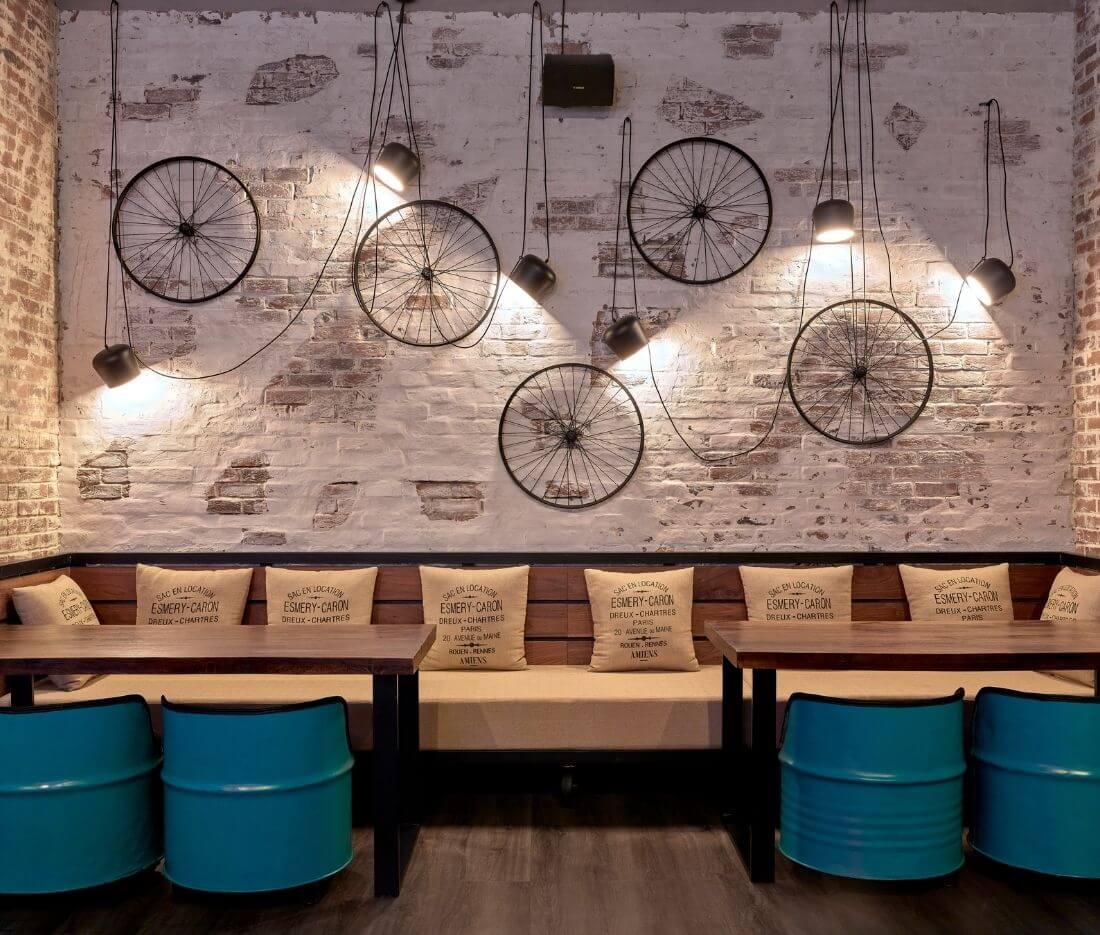
12 Things you must include to create a great restaurant Interior Design
The aesthetics of the restaurant must also be addressed by those who are thinking of running one, in addition to having fantastic food. Failure to take into account restaurant design is a major factor in the failure of many eateries, despite having excellent food. You must develop the ideal atmosphere and décor for your restaurant in order to draw guests in. You must put some crucial restaurant design advice into practice if you want to quickly become the talk of the town.
The secret to drawing visitors into a restaurant is to promise them an amazing sensory and culinary experience. Hence, here are some suggestions on how to design a restaurant interior from one of the best interior designers in Salem if you recently purchased a business or are beginning from scratch:
1 Make sure the entryway is inviting
Having an entrance that is eye-catching is one approach to draw guests to the restaurant. The entrance should be distinctive, elegant, and welcoming. The restaurant name needs to stand out and be clear from the street. Make sure the entrance reflects the restaurant’s theme. If you are providing Indian cuisine, for instance, the entrance may have vibrant and creative depictions of spices and herbs. But, if you are offering seafood, you might want to think about having an entryway with a water or ocean theme.
2 Choose a theme that target your clients
Consider your target audience when designing your restaurant. For instance, if you want to appeal to teenagers and college students, you could want to decorate with bright, bold colors, music-themed wallpaper, and vintage furniture. The corner bar should have eccentric furnishings and tiki lighting accents. On the other side, if businesspeople are your target audience, keep the design sleek, contemporary, and fashionable. Employ banquet seats with padding and light-colored furnishings. The furnishings should be attractive and well-kept.
3 Choose the right color
Your clients’ experience, how long they stay in your business, and how they feel are all significantly influenced by the colors you pick to decorate your foodservice company. Colors can improve customer satisfaction, increase appetite, promote table turnover, and give the impression that your eating area is larger. Nevertheless, they may also have a negative impact on your consumers, therefore it’s critical to consider how the interior color scheme of your restaurant communicates to customers.
4 Choose lightings appropriately
The interior design of your restaurant includes lighting as a key component. Getting enough natural light into your restaurant is the finest advice we could provide you to improve the interior design. The restaurant’s lighting can help to improve the aesthetic appeal and create a vibrant environment. Your restaurant’s lighting should be able to support and enhance the theme of your establishment. Restaurants will be able to regulate lighting simply and conduct extra tasks like changing colors & dimming thanks to the evolution of remote control and apps.
5 Color Scheme
The color scheme should be consistent with the restaurant’s brand identity and the type of food served. Warm colors like red and orange create a cozy atmosphere, while cool colors like blue and green create a calming atmosphere.
6 Layout
The restaurant’s layout should be designed to optimize traffic flow, minimize wait times, and maximize seating capacity. Consider factors such as the number of tables, the size of the dining area, and the location of the kitchen.
7 Seating
Choose seating that is comfortable, functional, and fits the overall design of the restaurant. The seating should also be arranged in a way that provides ample space for guests and staff to move around.
8 Materials:
The materials used in the restaurant should be durable, easy to clean, and visually appealing. Consider using materials like wood, stone, or metal to create a warm and inviting atmosphere.
9 Decor
The decor should complement the restaurant’s brand identity and the type of food served. Consider using artwork, plants, or other decorative elements to add interest and personality to the space.
10 Acoustics
Proper acoustics are essential in creating a comfortable dining experience. Consider using sound-absorbing materials like carpets, curtains, or acoustic panels to minimize noise and create a more intimate atmosphere.
11 Branding
The restaurant’s branding should be reflected in the interior design. Use design elements like logos, typography, and color to create a cohesive brand identity.
12 Technology
Incorporating technology into the restaurant’s design can enhance the dining experience. Consider using digital menus, touch-screen ordering systems, or other high-tech features to improve efficiency and convenience.
13 Accessibility:
The restaurant should be accessible to all customers, including those with disabilities. Consider factors such as wheelchair accessibility, braille signage, and accessible seating options to ensure that all customers feel welcome and comfortable in the space.
